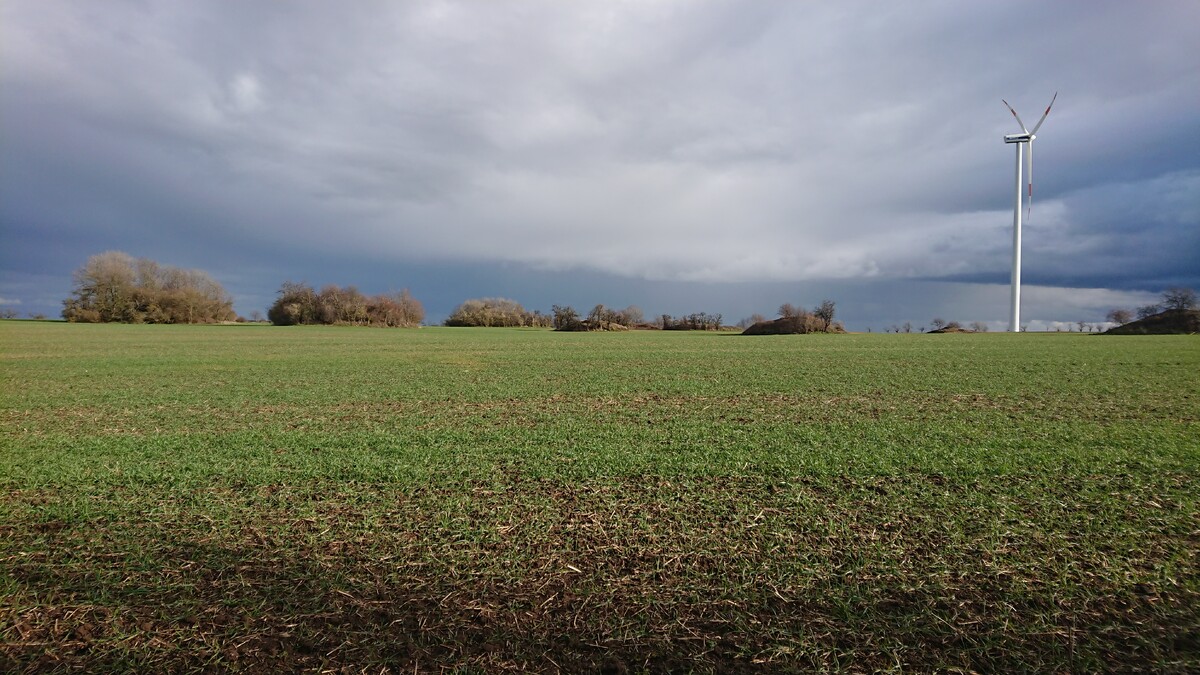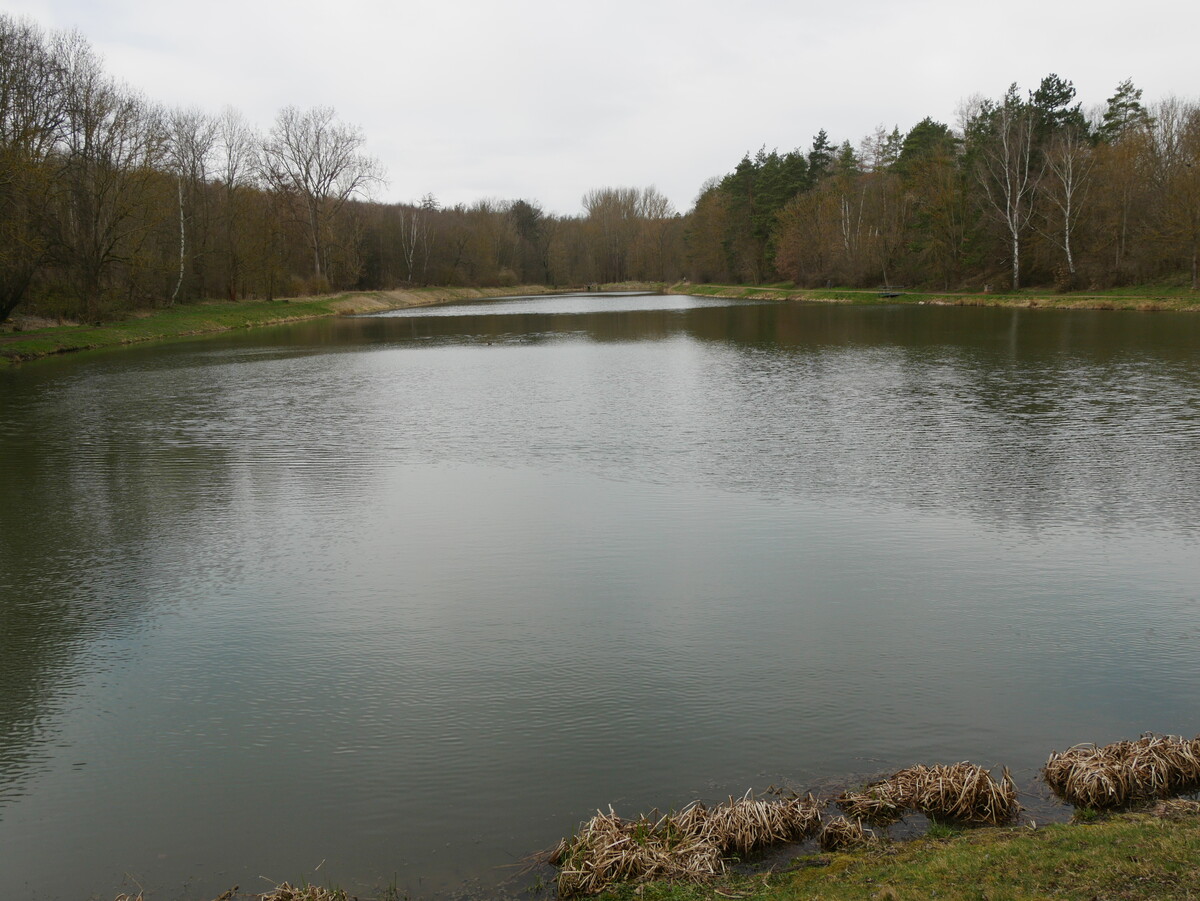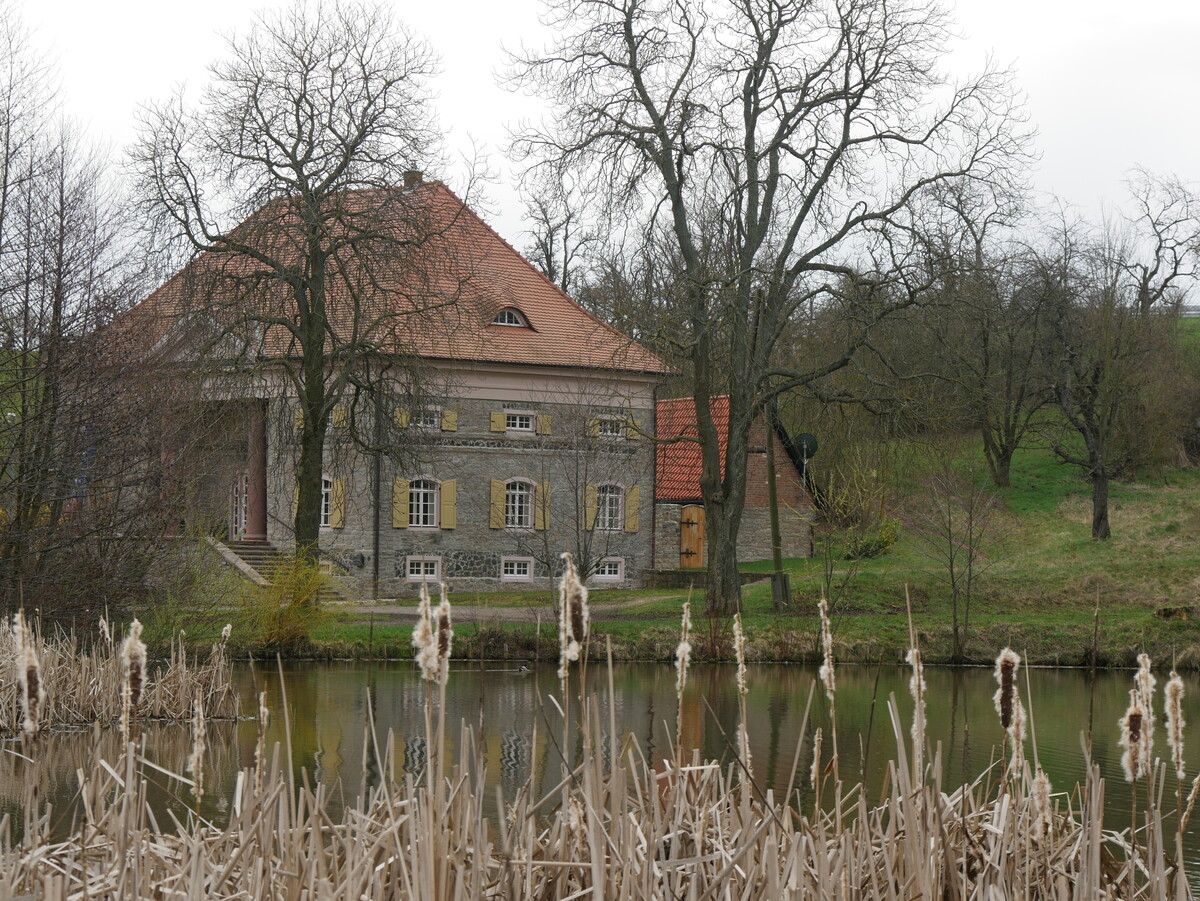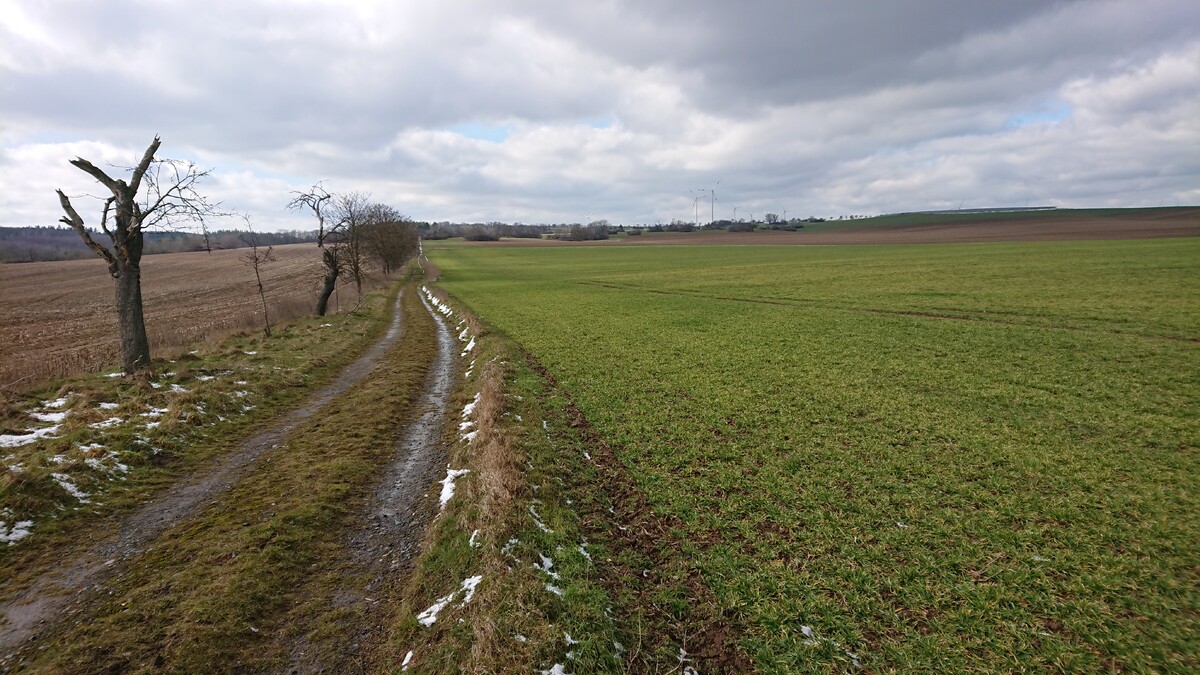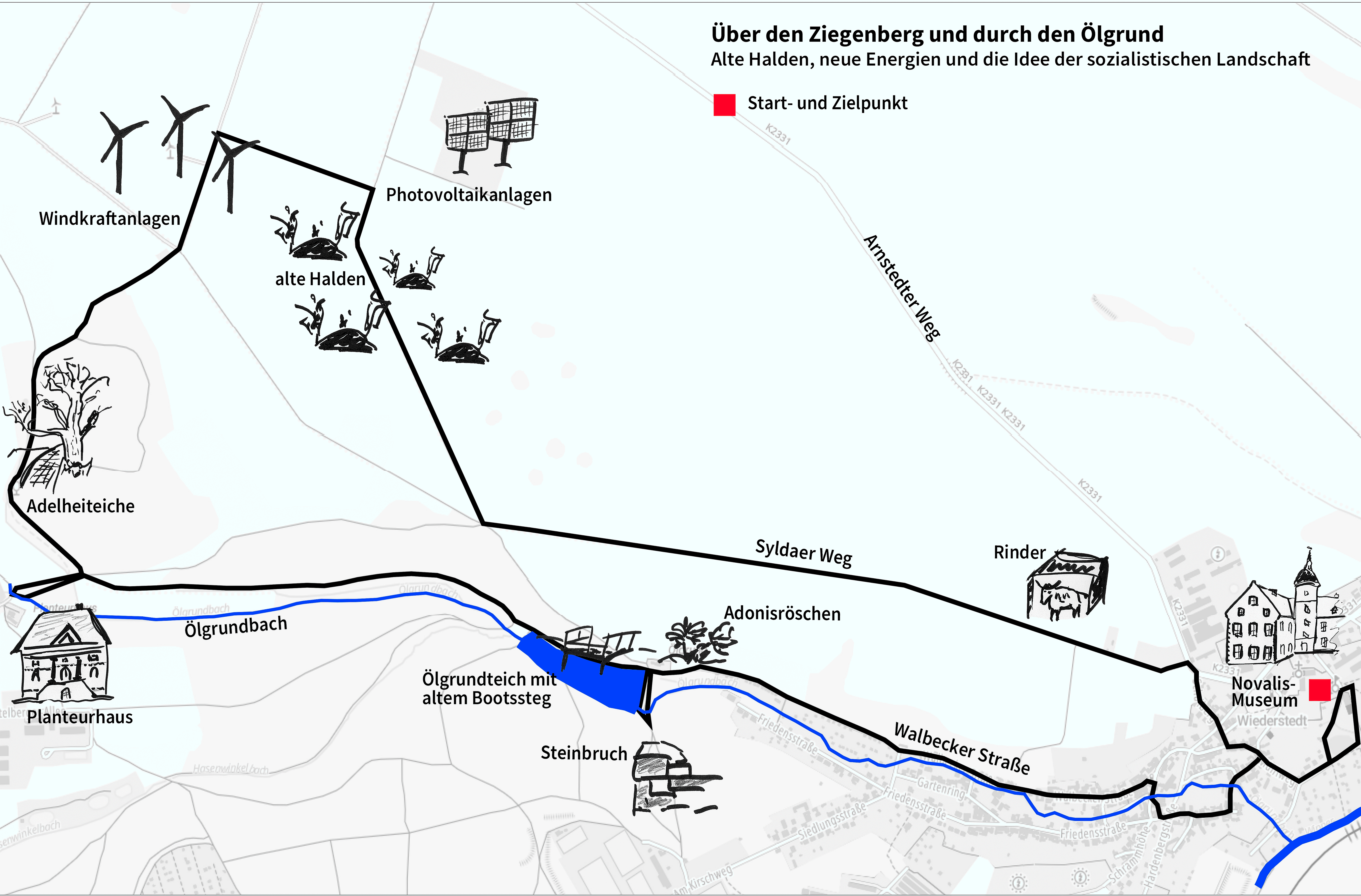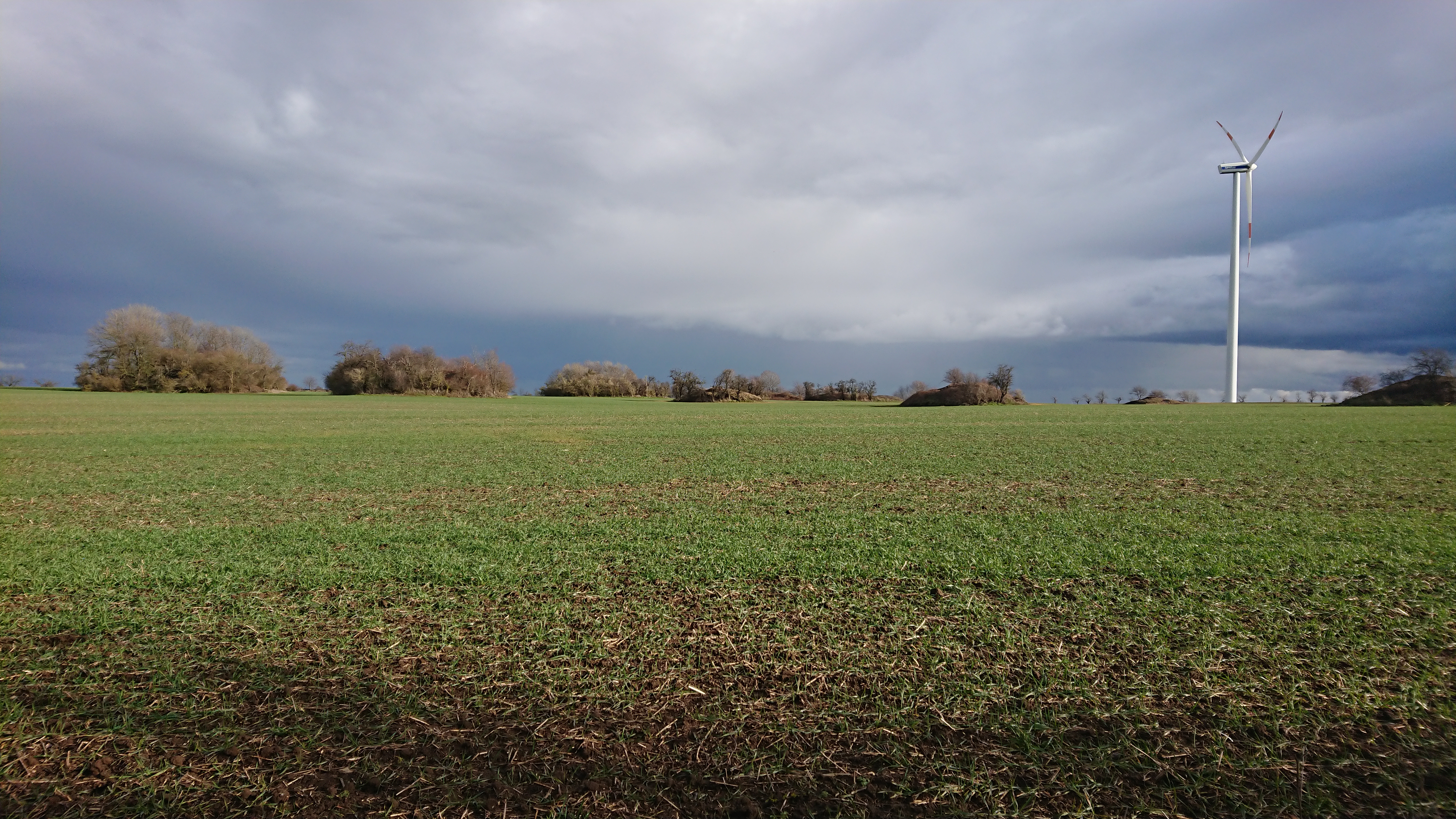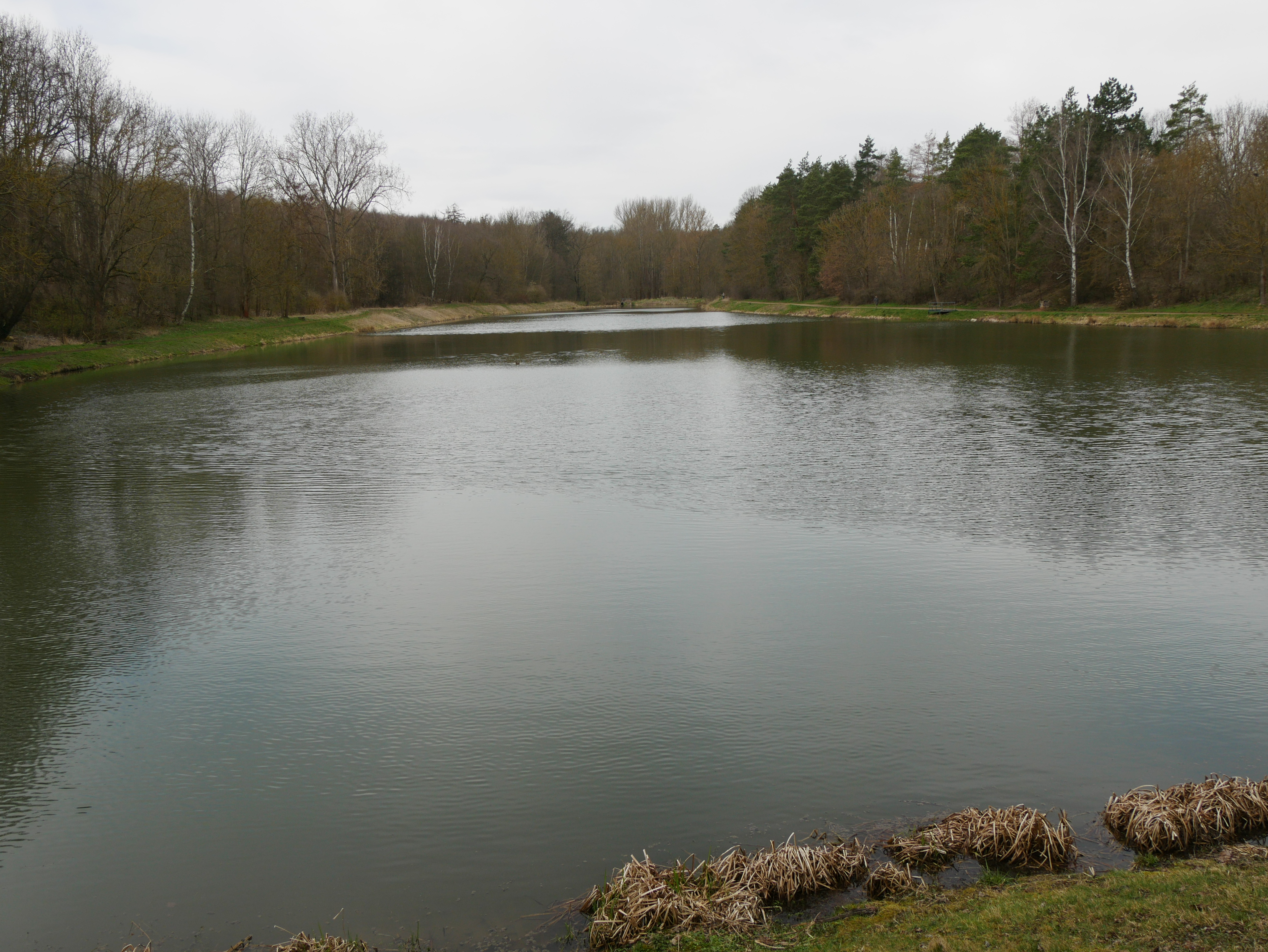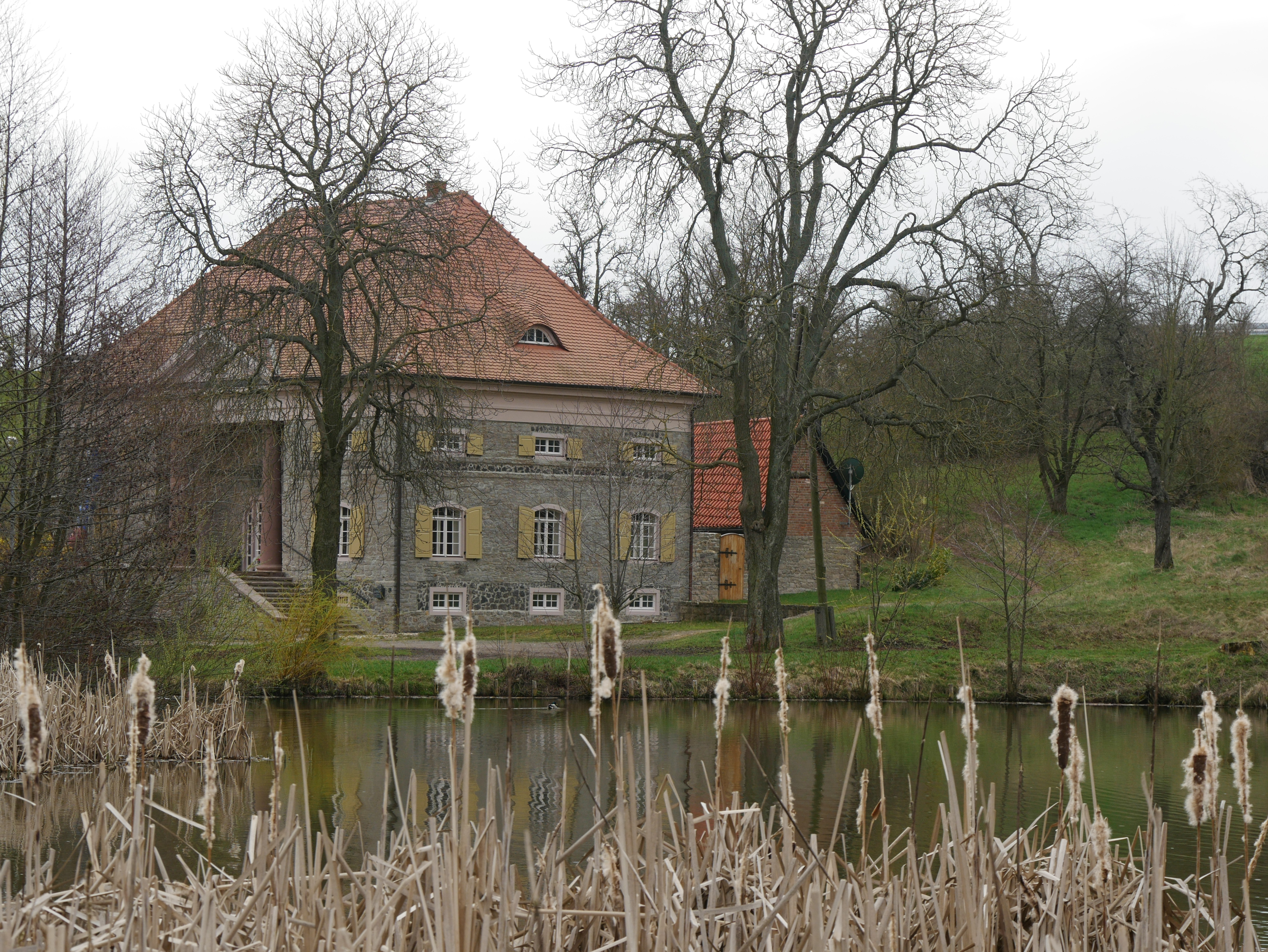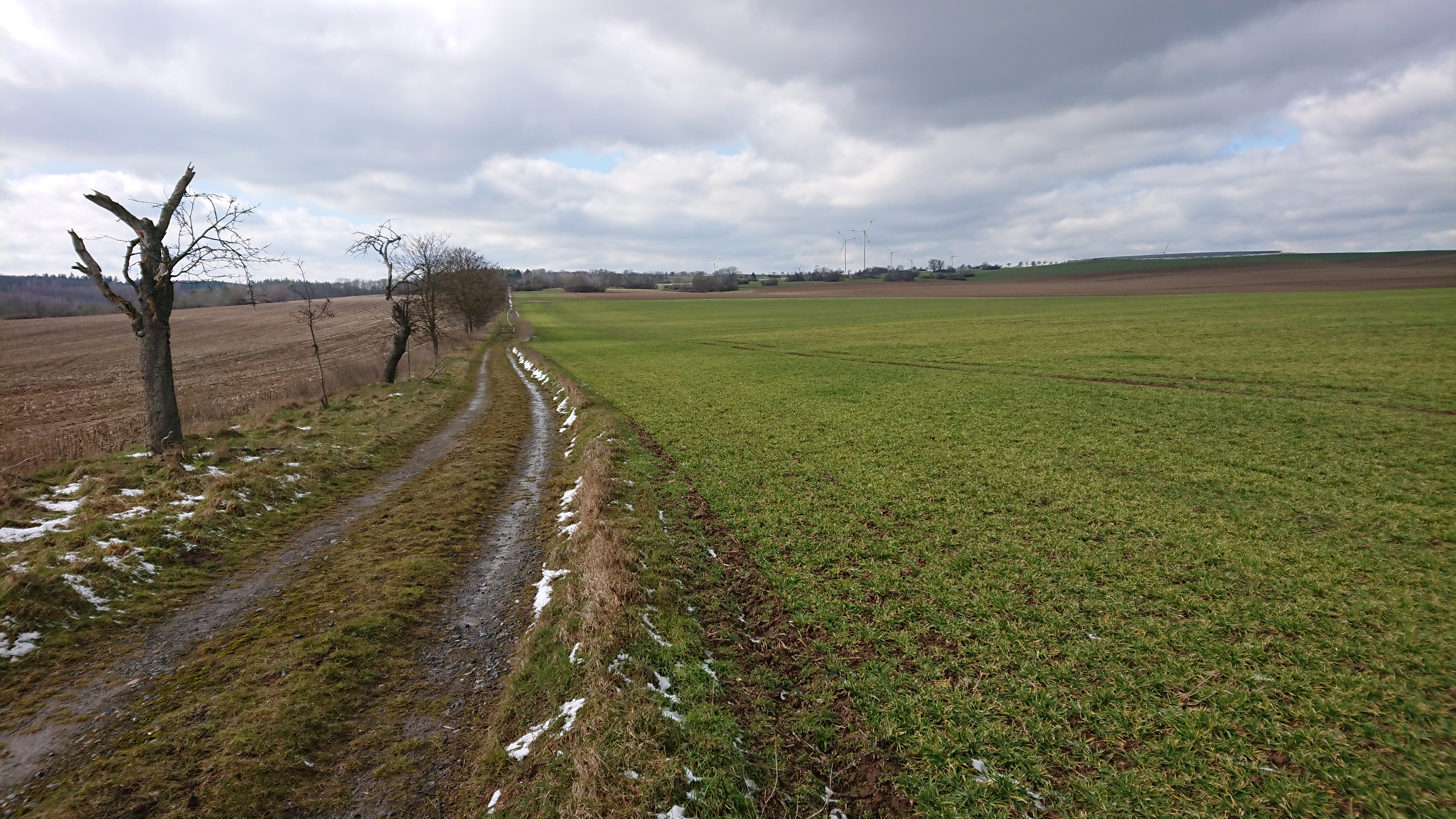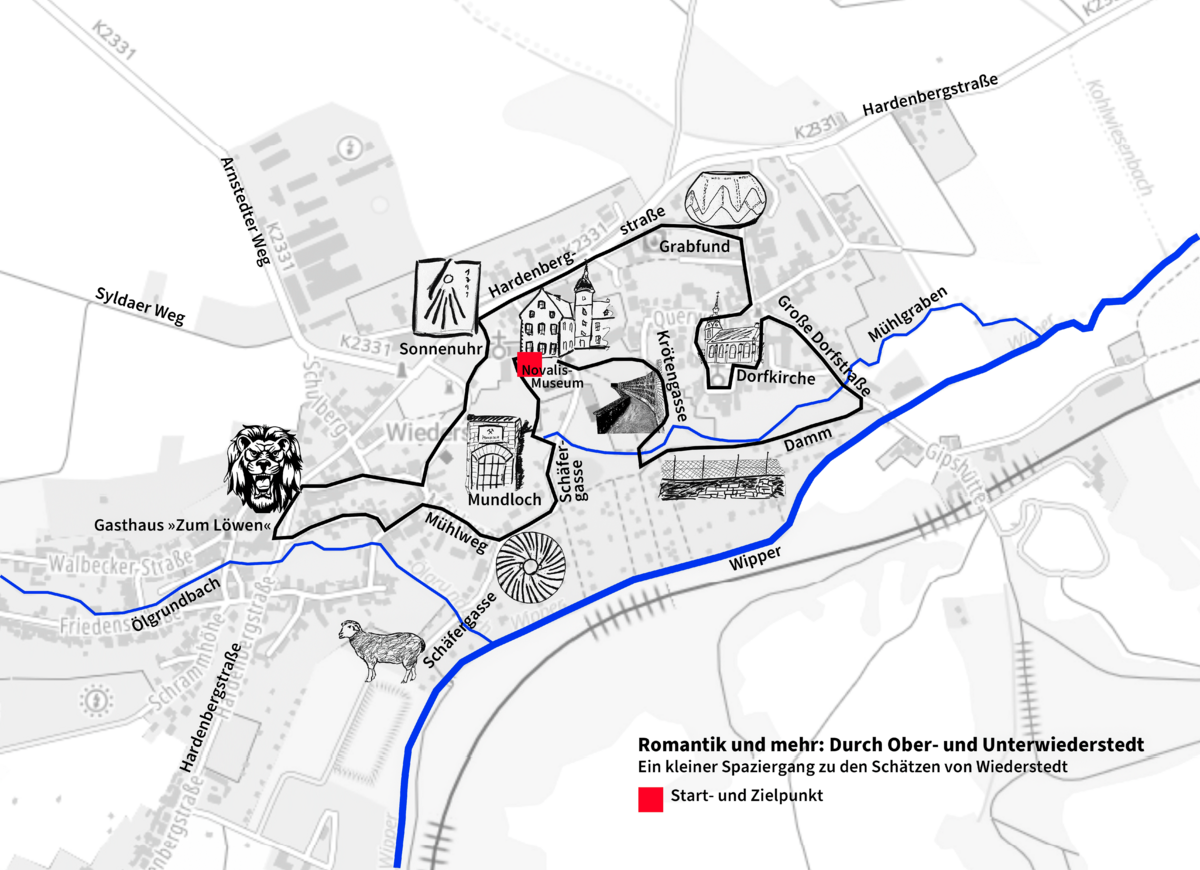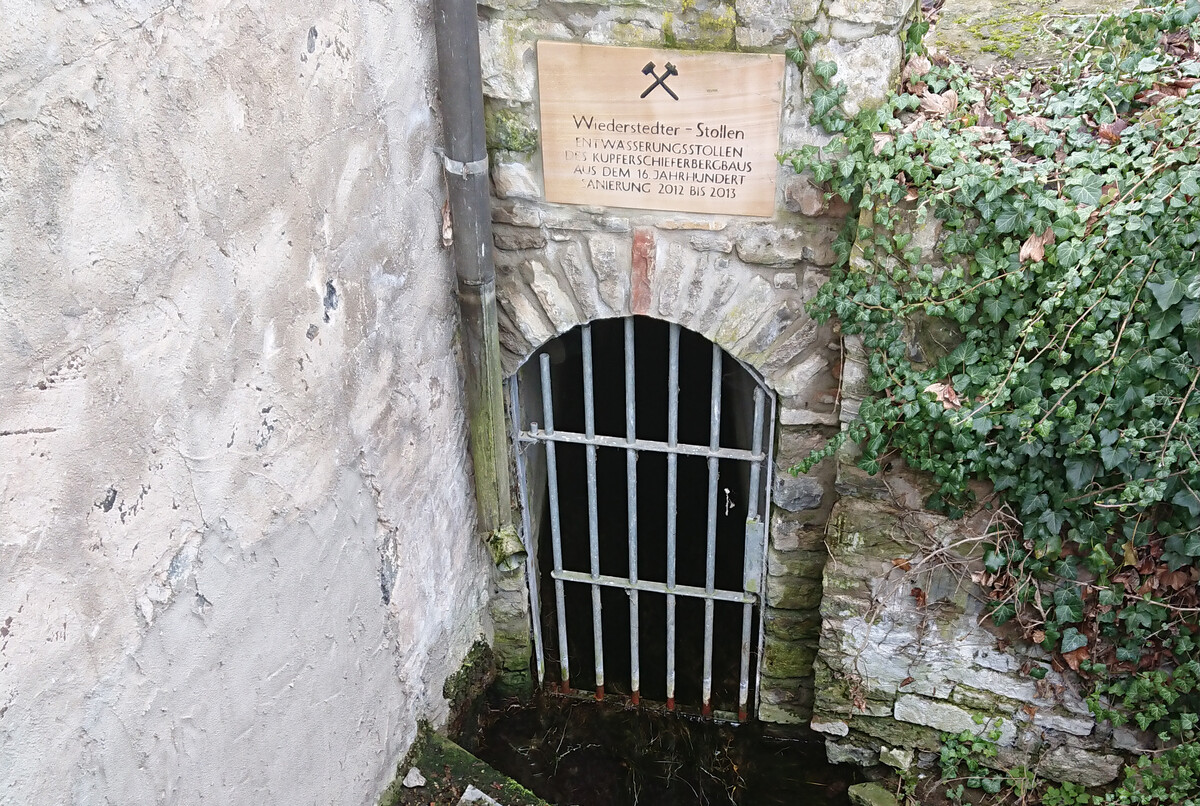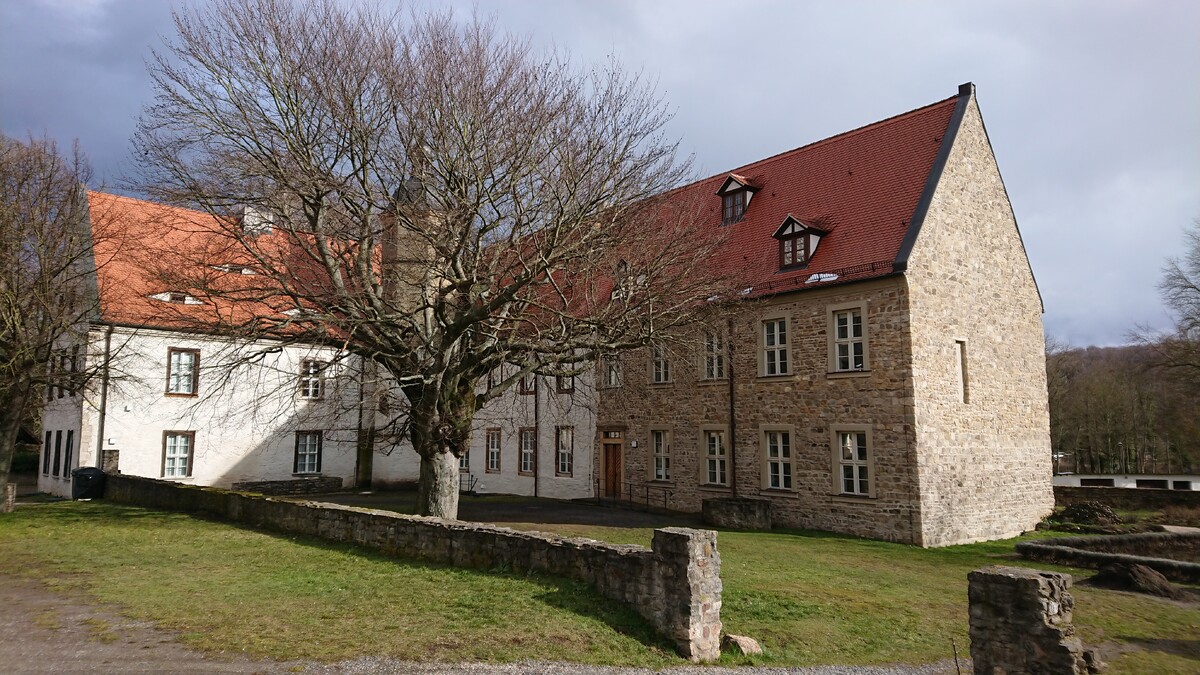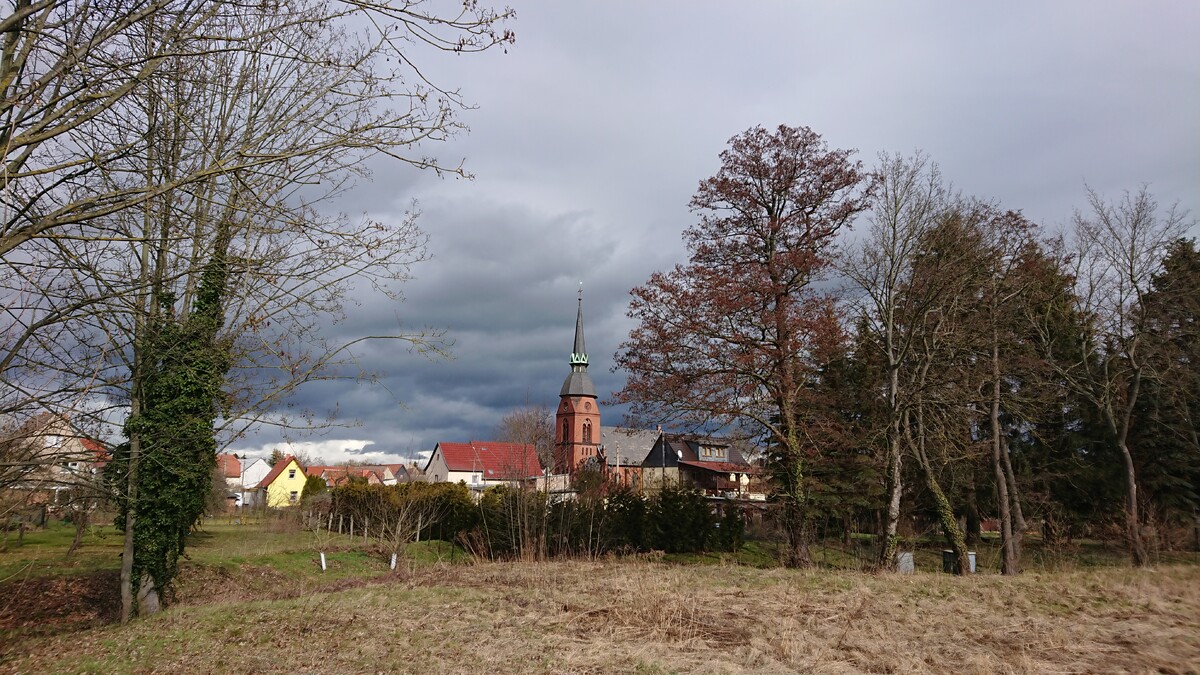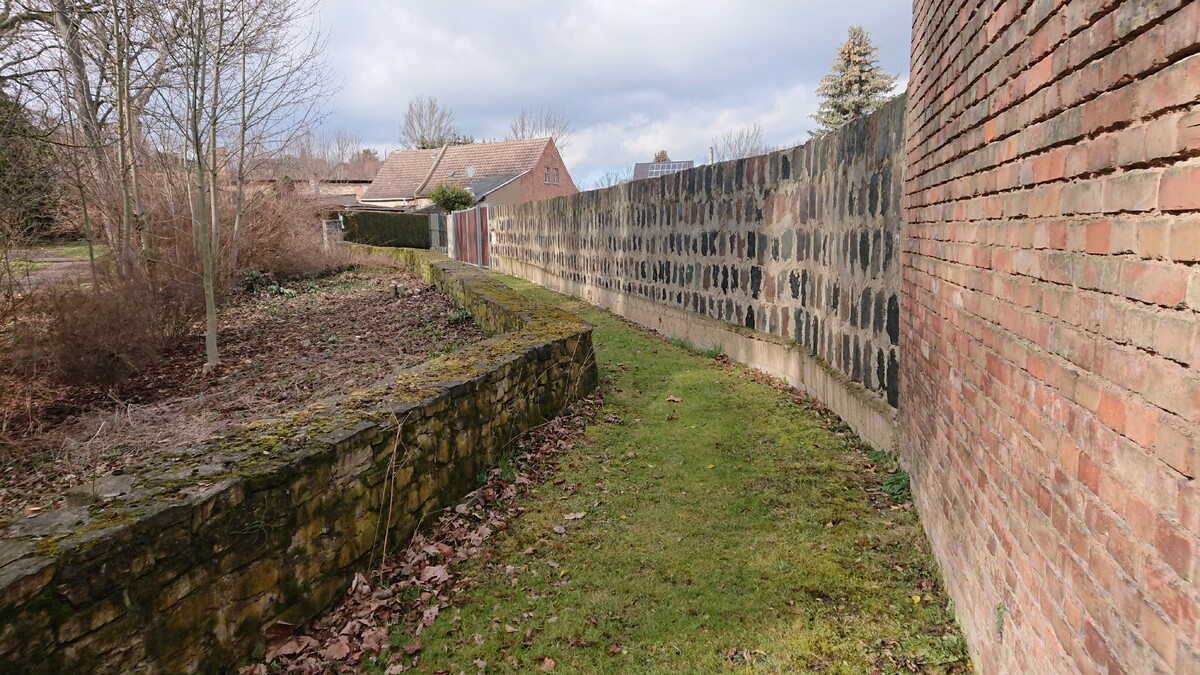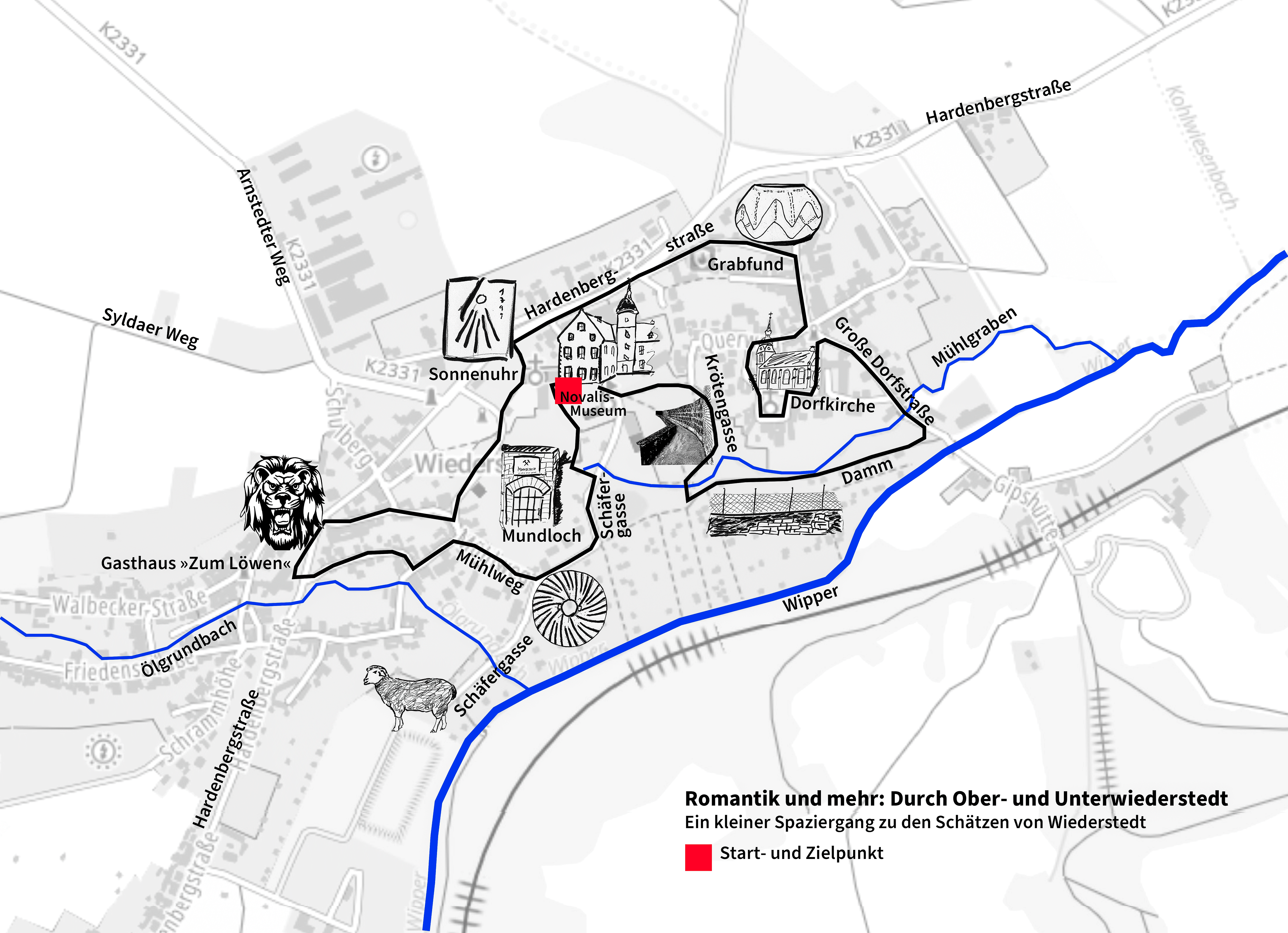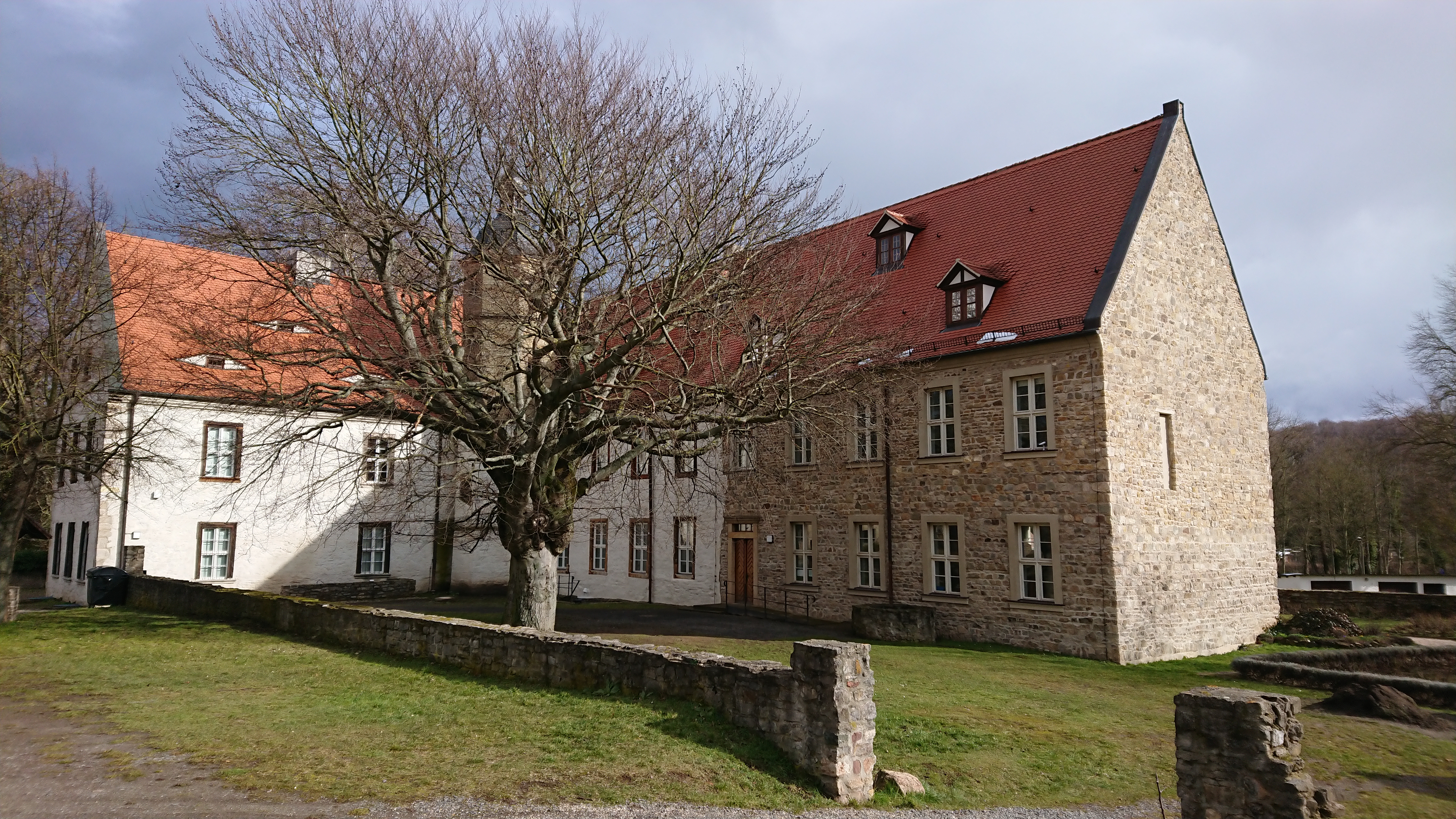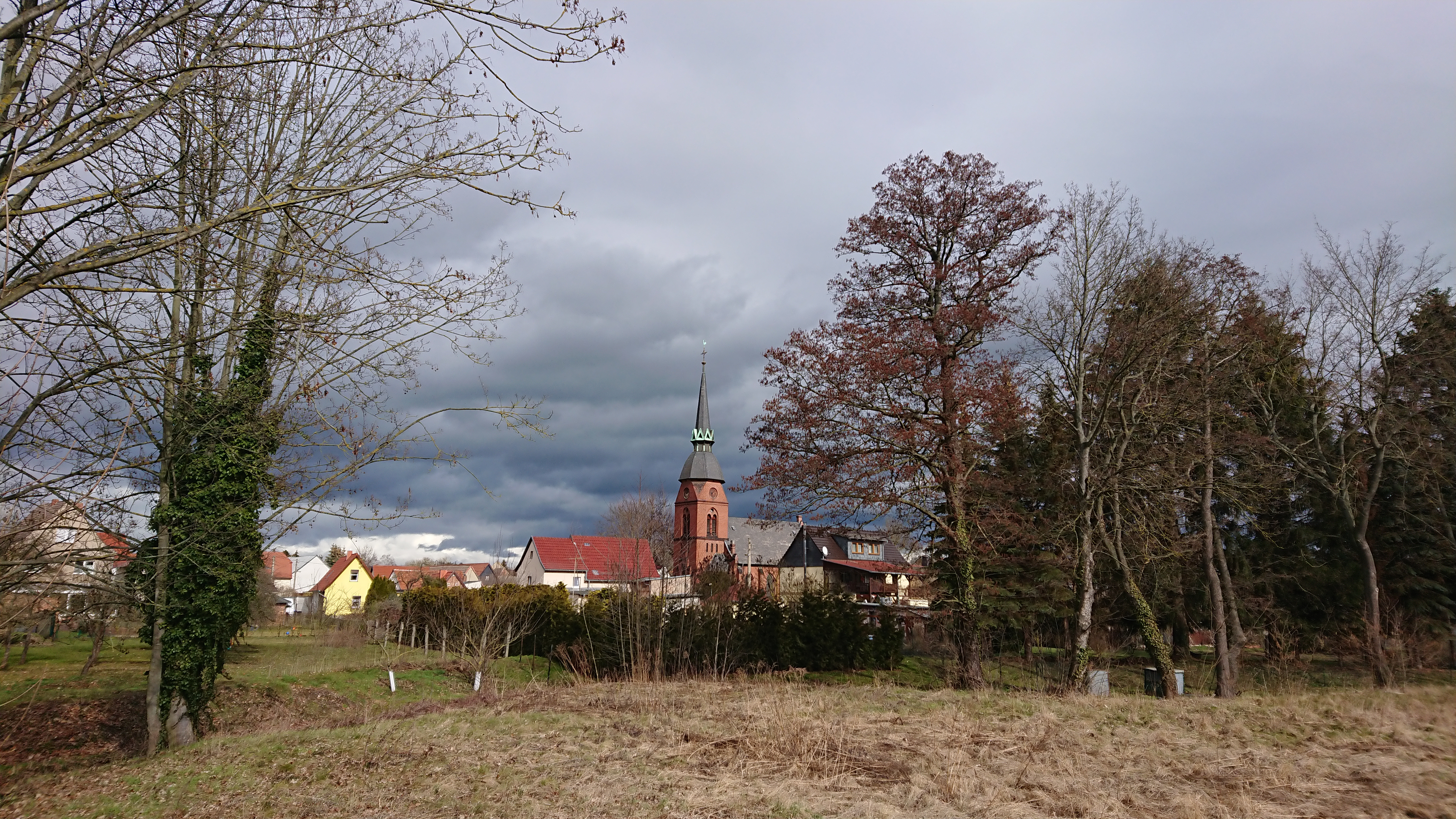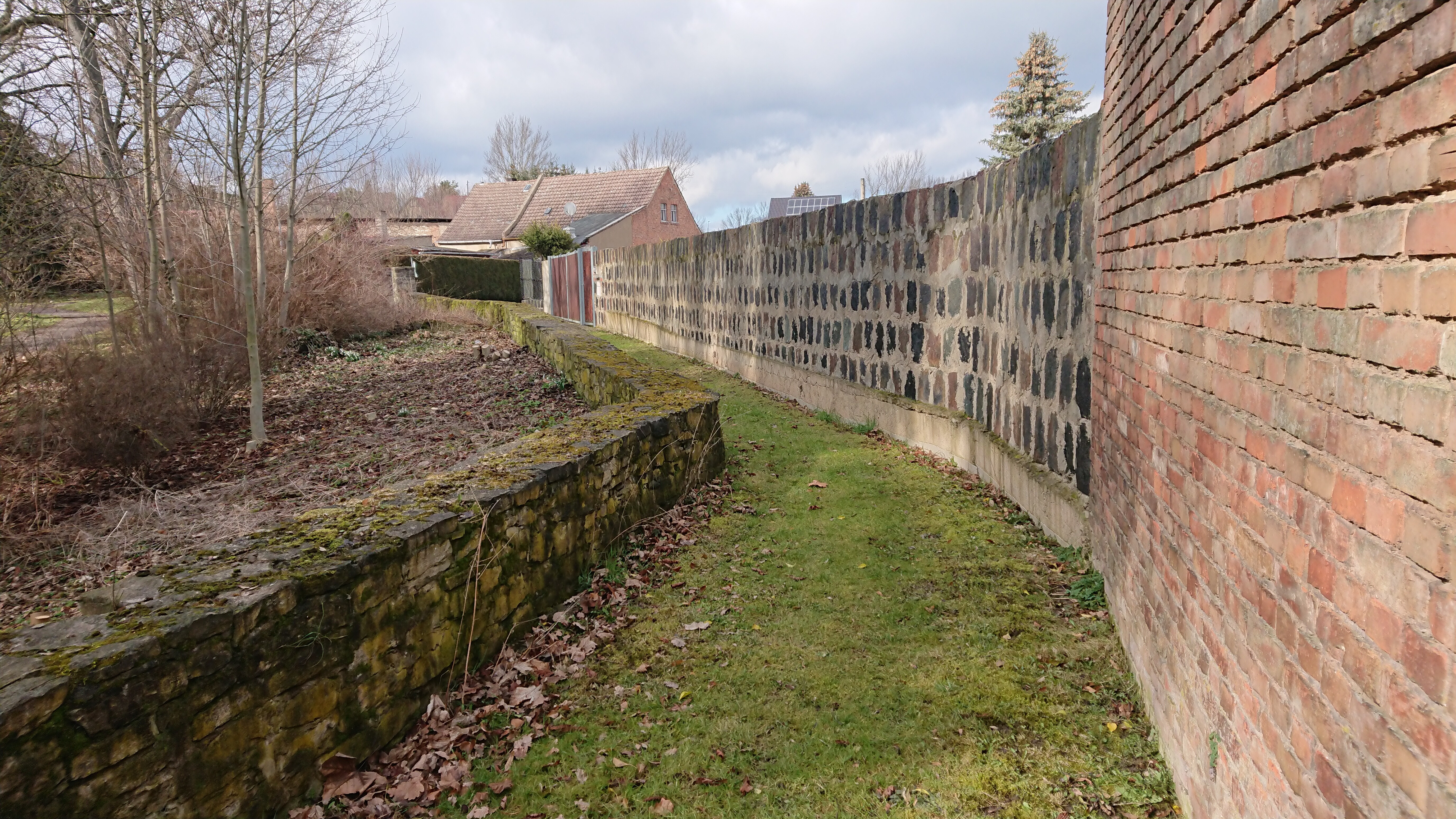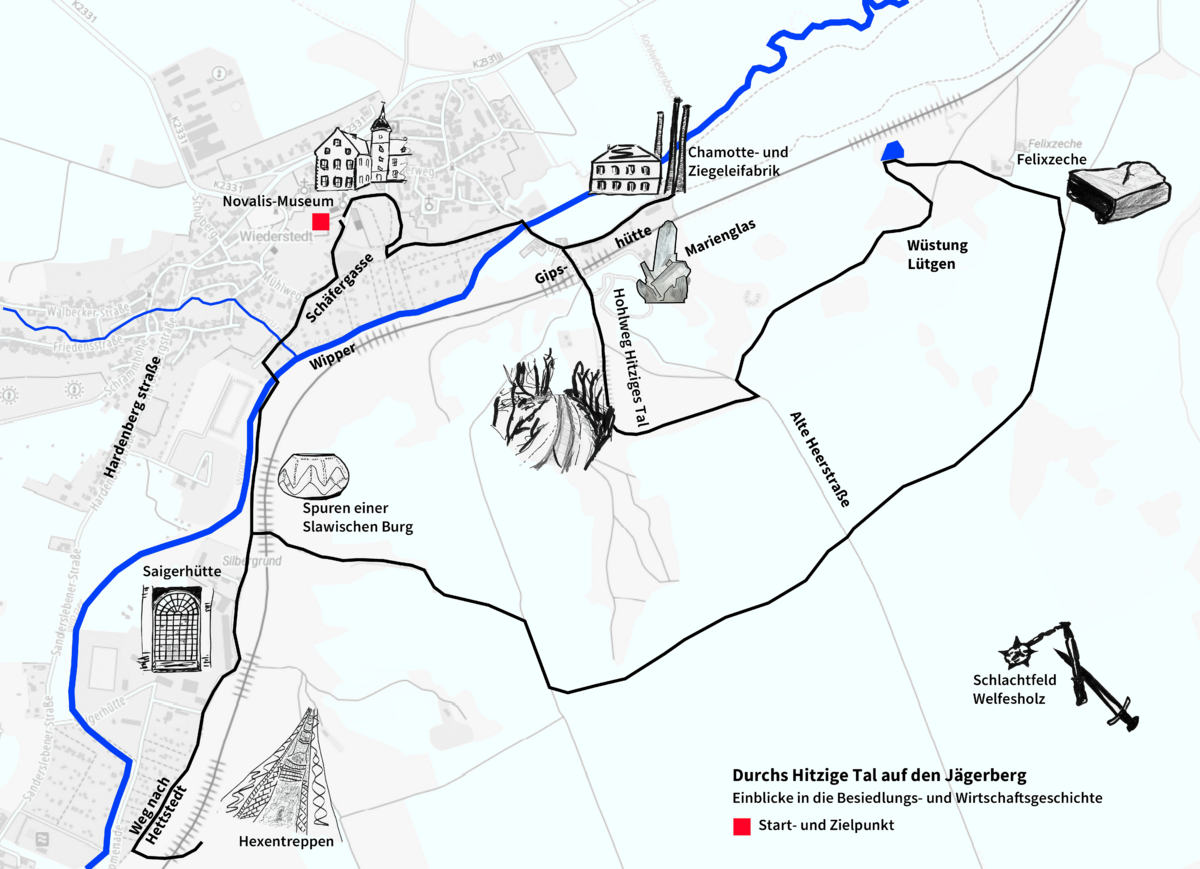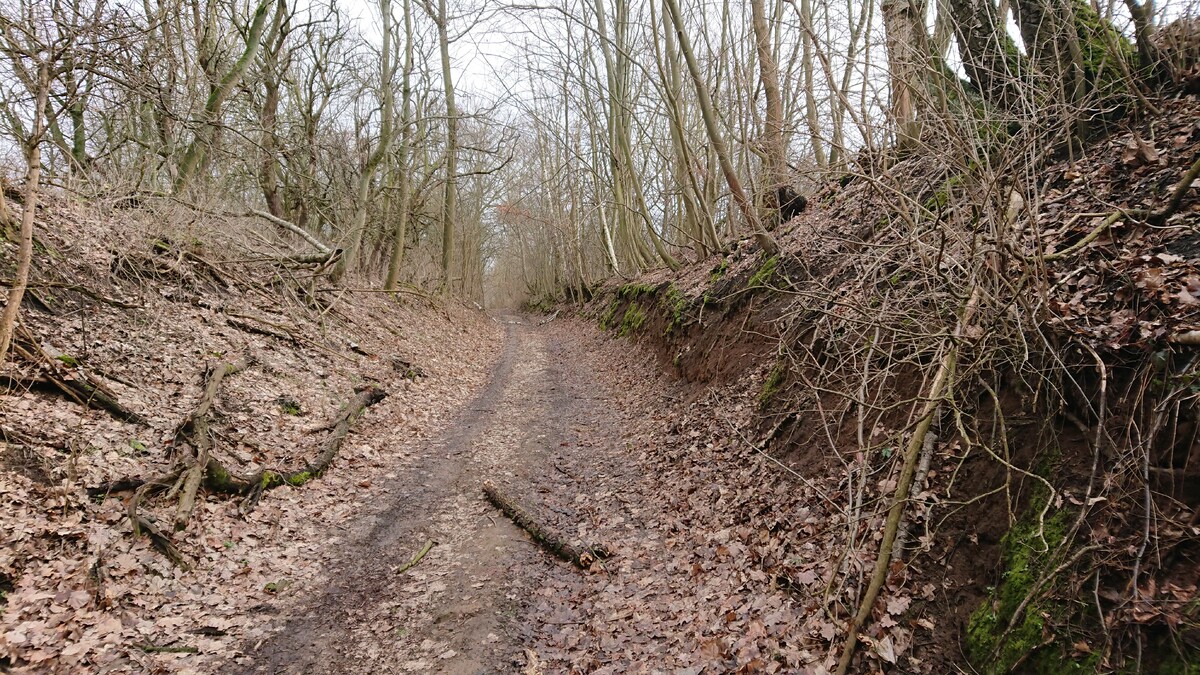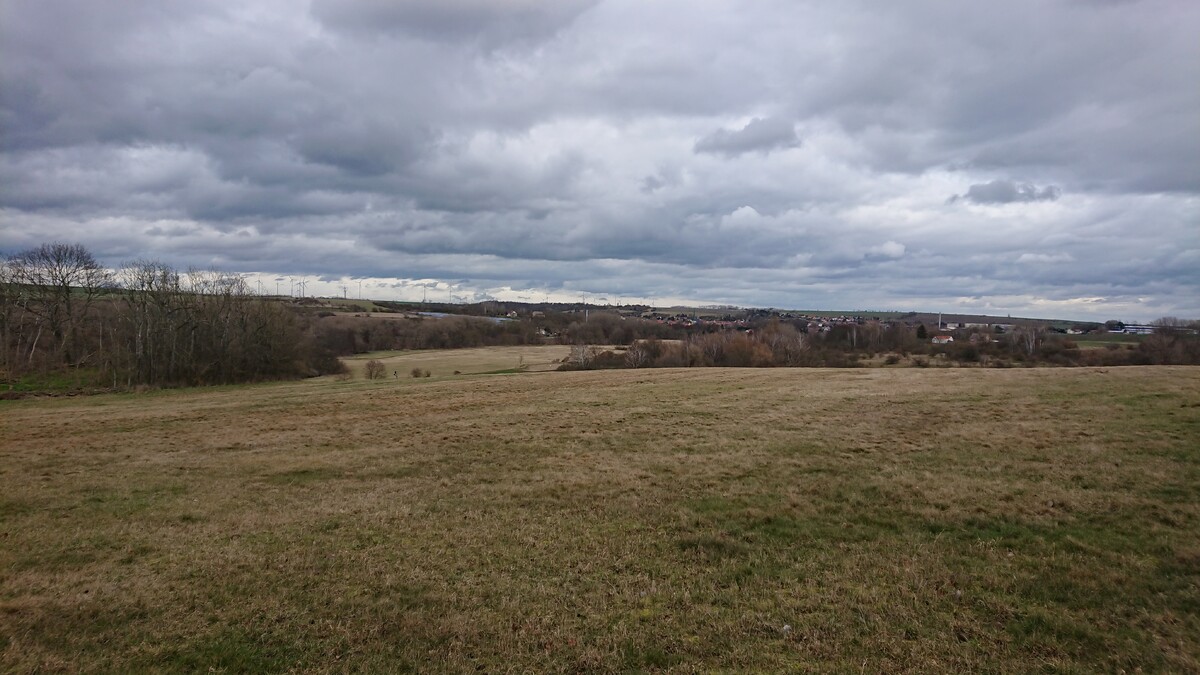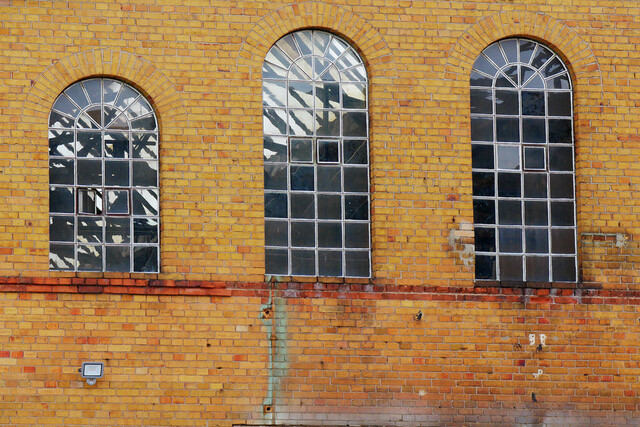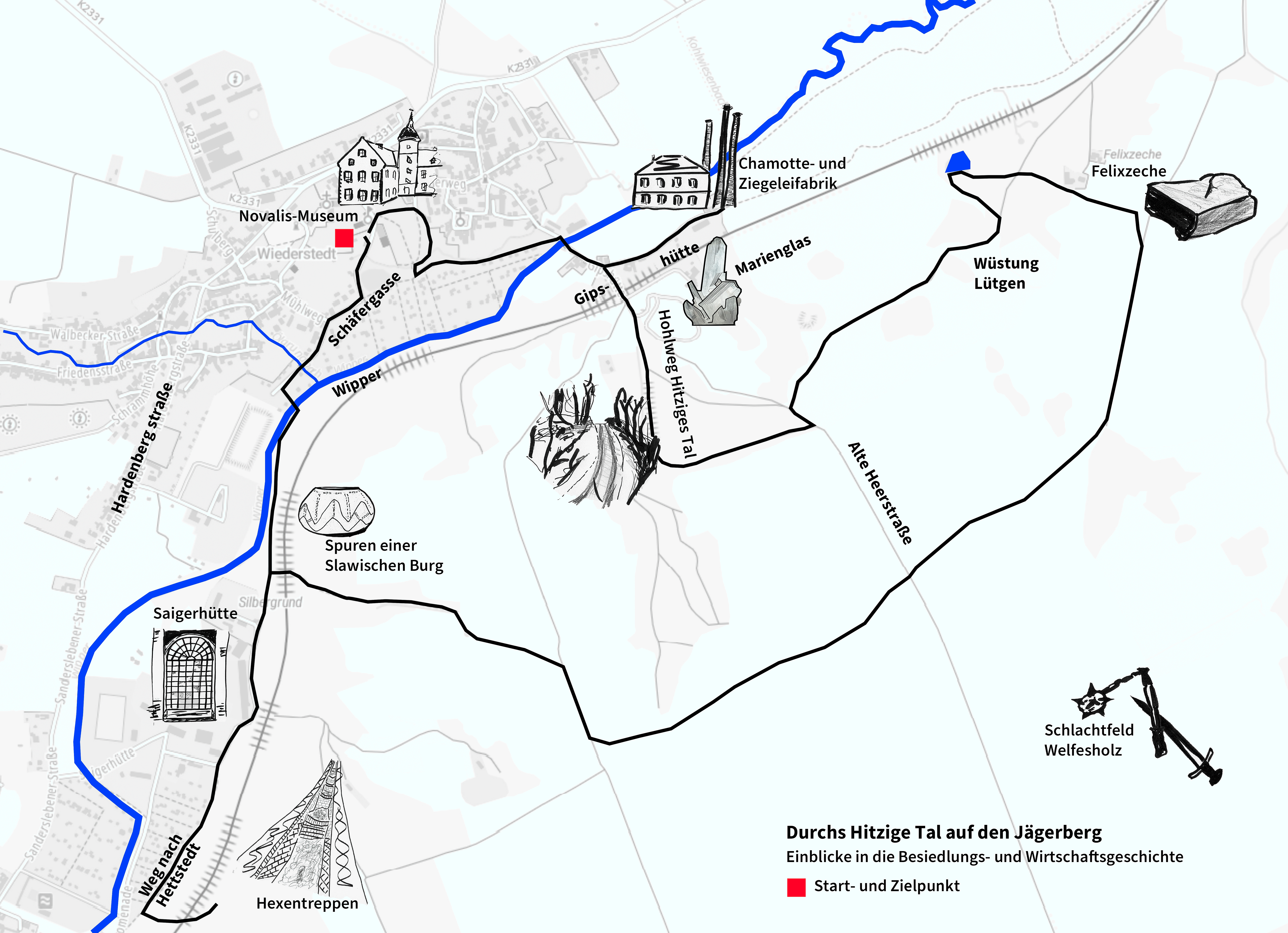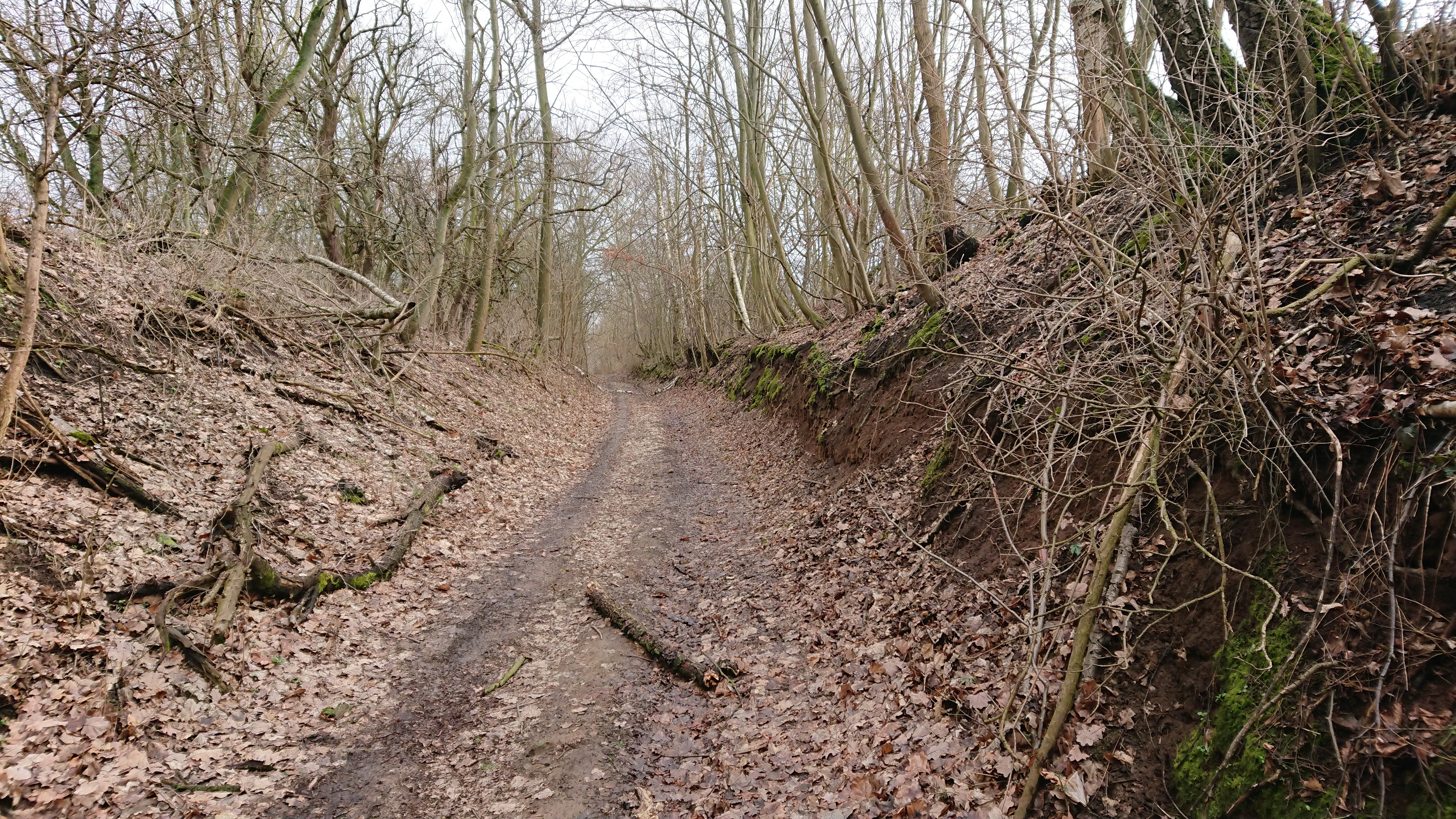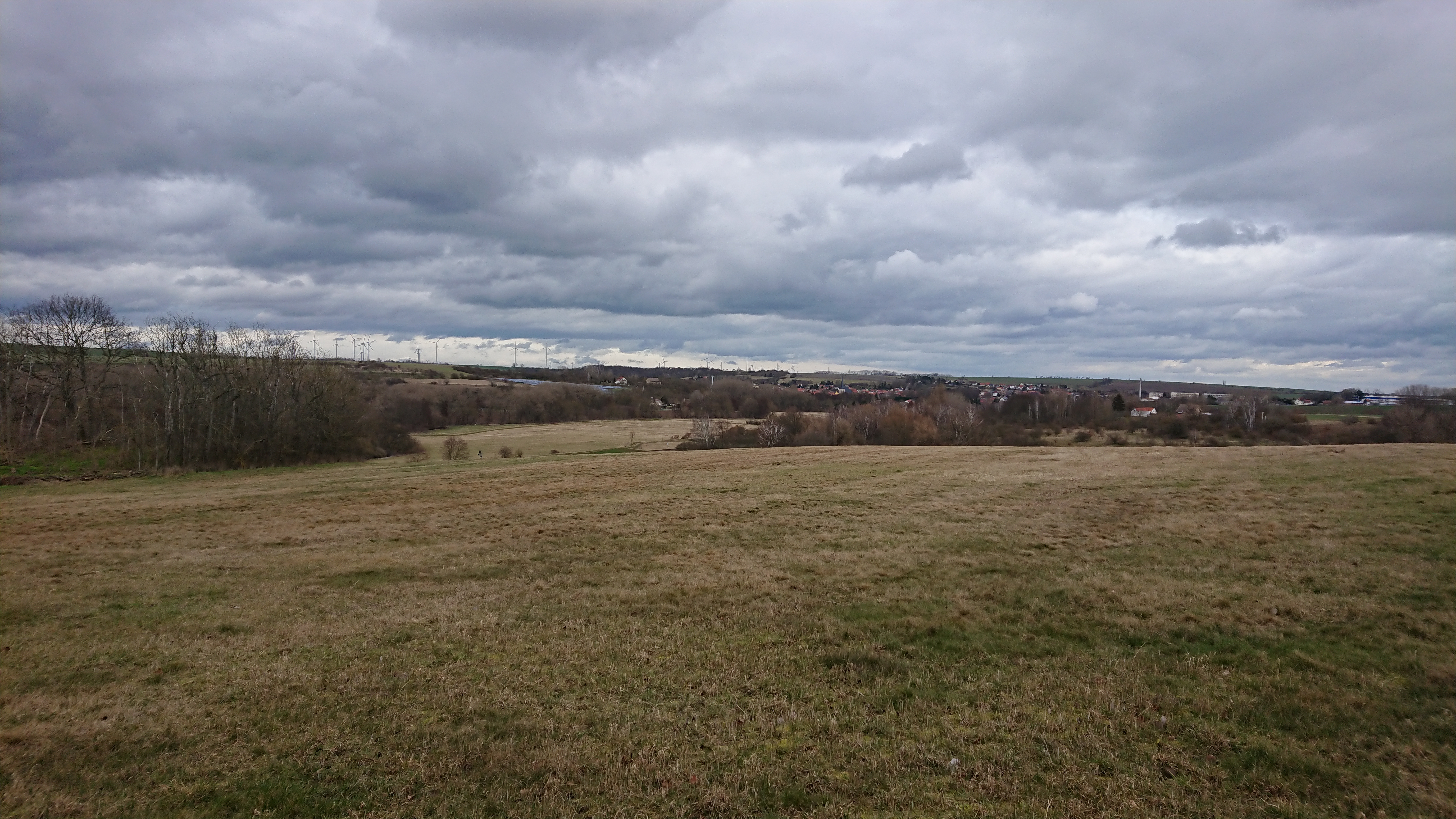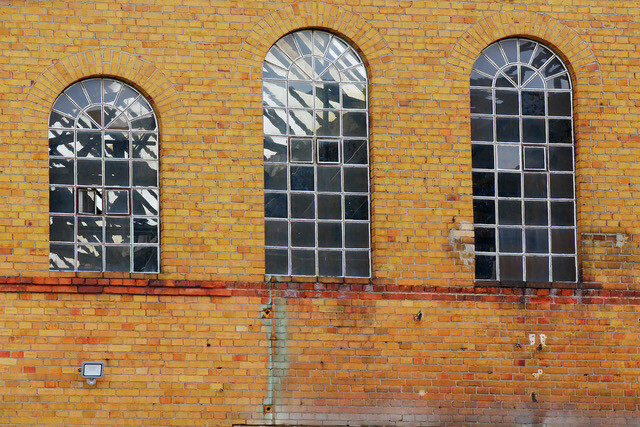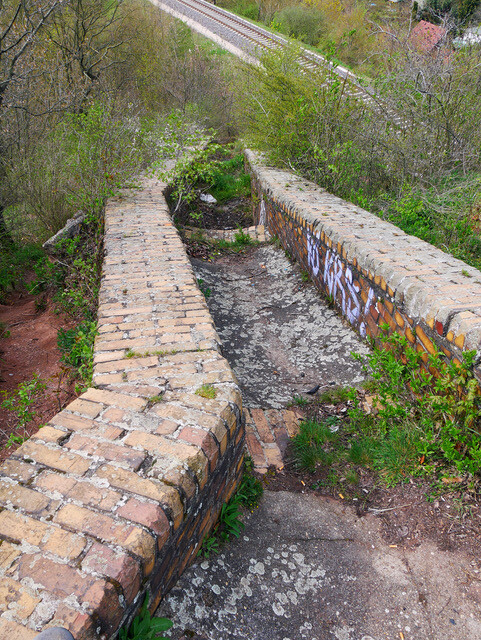Walks
Landscape between Revolutions and Romanticism – Three Wiederstedt Walks
Invitations to conversations accessible on foot by Lars Fischer, Büro für Landschaftskommunikation [Office for Landscape Communication]
The copper shale mining in the Mansfeld region is a thing of a bygone era, the Romanticism has become museum-like, and instead of the blue flower, yellow Adonis roses can be found. Wind turbines in combination with photovoltaic plants sketch out a still uncertain future on the horizon. What precious treasures does the landscape around Wiederstedt hold? What can be connected to after 800 years of industrial history: to new energies, to the natural beauty along the valley of the Wipper River? These questions will be answered differently by an archaeological monument conservator, residents of Wiederstedt, the owner of the former boat rental at the Ölgrundteich [Oil Ground Pond], a wind turbine operator or the director of the Novalis Museum in Oberwiederstedt Castle. One thing is certain: a treasure hunt and search for traces in this landscape in the north of the Mansfeld region, which has been shaped by humans for thousands of years, is worthwhile. I have found a precious treasure for myself: the Planteurhaus in the Ölgrund near Walbeck. The classicist villa in the style of the Renaissance master architect Palladio is not only an architectural rarity but also a welcome occasion to talk about the utopian idea of a “(post)socialist landscape”.
The three Wiederstedt walks that I have suggested are an invitation to talk about the country, its people, and their landscape treasures. The walks are designed with guests who are familiar with the area.
Over the Ziegenberg [Goat Mountain] and through the Ölgrund Old heaps, new energies and the idea of a socialist landscape
Media
© Lars Fischer
Copper, silver, cobalt and nickel – all of these ores were mined at Oberwiederstedt and Walbeck. The corresponding mines were listed as “Wiederstedt V” and “Wiederstedt VI” in the prospecting files of the Halle Chief Mining Authority in 1873. Today, wind turbines rotate above the remnants of mining, with their rotor blades beating their monotonous rhythm into the landscape, occasionally interrupted by the call of a skylark – no second Berggeschrey [“mining clamor”] can be heard. The walk from Oberwiederstedt along the way to Sylda over the Ziegenberg in the direction of Walbeck and back through the Ölgrund leads not only along but over old heaps and pits from the 16th century, as well as past wind power and photovoltaic plants. The Planteurhaus near Walbeck is also on the way. The classicist villa in the style of the Renaissance master architect Palladio (1508 – 1580) is not only an architectural rarity but a welcome occasion to talk about the utopian idea of the “(post)socialist landscape” in the sense of the Marxist philosopher and architectural theorist Lothar Kühne (1931 – 1985).
And the Ölgrund is a gem. Although there are only remnants of the old fruit tree plantations, and only a blue metal railing reminds us of the Ölgrund pond, a popular excursion destination in the 1970s and 1980s with a snack bar and boat rental, here the Adonis roses bloom in spring. In the nearby Zechstein quarry, not only the stones for the castle in Oberwiederstedt were quarried. Along the Ölgrundbach [Oil Ground Creek], past allotment gardens, the path leads back to Oberwiederstedt, where the creek, which used to be called Walbke, flows into the Wipper River.
This walk was designed together with Frank Morcinietz, a knowledgeable honorary archaeological monument conservator and one of the rescuers of Novalis’ birthplace in Oberwiederstedt. He accompanies us on this walk. Together, we will meet other guests with local knowledge.
Meeting Point: Inspektorhaus at the Novalis Museum
Start: 10:00 am
Return: around 03:00 pm
Length: 10 km
Recommended: good footwear, water bottle and break-time snacks
Romanticism and more: From Ober- to Unterwiederstedt and back A short walk to the treasures of Wiederstedt
Media
© Lars Fischer
Together with some residents of Wiederstedt, we will stroll along memories, historical traces, and anecdotes through the village, which was created in 1950 by the merger of the communities of Unter- and Oberwiederstedt. Where might the young Novalis have played: on the wall of the Castle Park in Krötengasse [Toad Lane], in the mouth hole of the Wiederstedt mine tunnel? Did he read the time on the small sundial on the wall of the old monastery church? What does the future hold for the two churches in the village? In the tower of St. Marien [St. Mary’s], where Novalis was baptized, a newly restored clock ticks, while the brick church in Unterwiederstedt has been desecrated and sold, even though it was the place of worship used by the Protestant congregation in the 1970s. How did young, committed people from the village manage to save Oberwiederstedt Castle from demolition, and what drove them, what motivated them?
The flood protection dam along the Wipper River also holds a little secret. The name Mühlenstraße [Mill Street] refers to the location of the old mill. But where did the shepherd lead his animals on Schäfergasse [Shepherd’s Lane]? The inn “Zum Löwen” [The Lion] has been in the village for more than 100 years, and meals are still being prepared in the kitchen. But since when has the dining room been closed?
The short walk is an occasion to talk about some treasures of the place.
Meeting point: Inspektorhaus at the Novalis Museum
Start: 10:00 a.m.
Return: around 01:00 pm
Length: 3.5 km
Through the Hitzige Tal [Hot Valley] to the Jägerberg [Hunter’s Mountain] Insights into settlement and economic history
Media
© Lars Fischer
The prehistory and early history of the Mansfeld region is very well researched. The oldest human tool found in this landscape is the 250,000-year-old hand axe from Helfta, south of Eisleben. Historical traces in the Wipper River Valley and along the slopes indicate a settlement history stretching back seven millennia. Since the Bronze Age, it has been connected with the mining of copper shale. The walk invites you to follow these traces and to dive briefly into local economic history here and there. Through Krötengasse [Toad Lane], the former border between the Kingdom of Prussia and the Duchy of Anhalt, the route leads to the Wipper River and continues on the flood protection dam towards Gipshütte. A detour leads to the former Anhalt Chamotte and Brickworks Unterwiederstedt, before the walk follows a Hohlweg [Hollow Path] through the Hitzige Tal [Hot Valley] up to the Jägerberg [Hunter’s Mountain]. Across open fields, the path, which offers a beautiful view to Sandersleben, continues to the Felixzeche [Felix Mine], where lignite was once mined, and from there, across the battlefield at Welfesholz, where Emperor Heinrich V and rebellious Saxons confronted each other in 1115. Passing mining dumps from the 16th century, we reach the remains of the rampart and main castle of a Slavic settlement site at Jägerberg. On the way back, we pass by Saigerhütte [Saiger Smelting Works] and the Silbergrund [Silver Ground], cross the Wipper River and end the walk at the mouth of the Wiederstedter Stollen [Wiederstedt tunnel] in the park of the Novalis Museum.
If time and strength permit, the way back can be supplemented by a detour to the “Hexentreppen” [Witches’ Stairs].
This walk was also designed together with Frank Morcinietz, a knowledgeable honorary archaeological monument conservator and one of the rescuers of Novalis’ birthplace in Oberwiederstedt. He will accompany us on this walk.
Meeting point: Inspektorhaus at the Novalis Museum
Start: 11:00 a.m.
Return: around 04:00 p.m.
Length: 10 km
Recommended: good footwear, drinking bottle and break-time snacks

